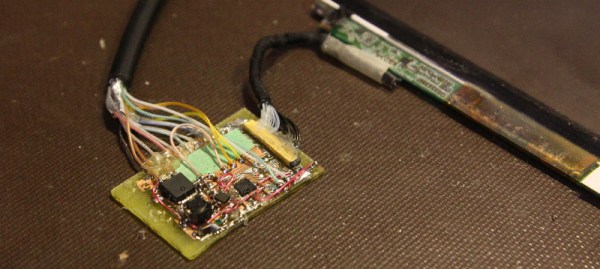No doubt anyone reading this has access to a few ancient laptops and the displays contained within. While those laptops are probably still stuck with a Gig of RAM and Windows ME, the display panels are probably still good. They don’t have HDMI, DVI, or VGA, though, which means those panels will need a converter.
[Jared] had a different idea. Instead of reusing laptop displays with a converter, why not connect them to an LVDS connector on some modern hardware? He had a RIoT board with a native LVDS connector, and with some clever reverse engineering and PCB fabrication he can put those old displays to work.
[Jared] had a very cool sunlight-readable ‘transflective’ LCD from on old Portege R500 laptop. If he was going to take apart one laptop to use with modern hardware, this was the one. Opening up the display he found a tiny connector but no obvious markings of what pins did what. The datasheet was also not to be found. By shorting two pins together, he could figure out what the pins were: shorting the clock freezes the screen, shorting the HSYNC and VSYNC means the screen loses sync. Blues, reds, and greens can be found the same way.
With the pins identified, a breakout board was in order. This is just a small board to break out the very small wires to solderable pads and a driver for the backlight. With that, and the RIoT with an LVDS output, [Jared] was able to use new hardware with this old but still serviceable display.












